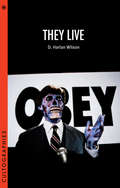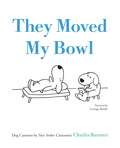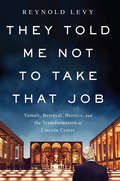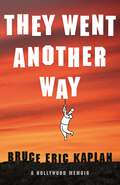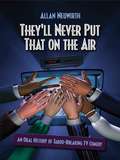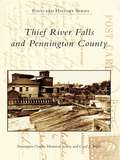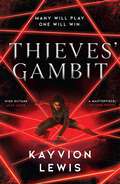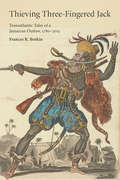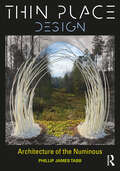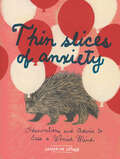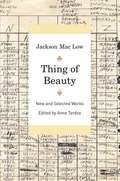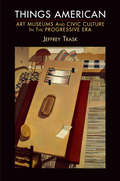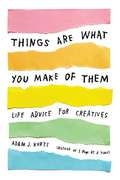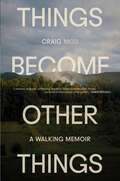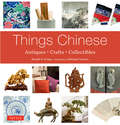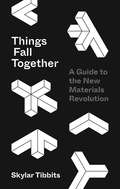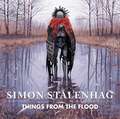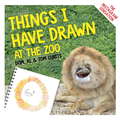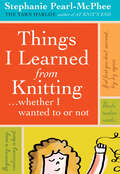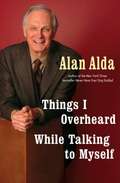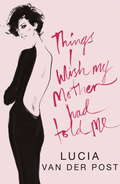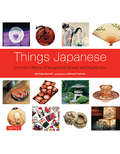- Table View
- List View
They Live
by Wilson D. HarlanTraces the development of They Live from its comic book roots to its legacy as a cult masterpiece while evaluating the film in light of paranoid/postmodern theory
They Live (Cultographies)
by D. Harlan WilsonBorn out of the cultural flamboyance and anxiety of the 1980s, They Live (1988) is a hallmark of John Carpenter's singular canon, combining the aesthetics of multiple genres and leveling an attack against the politics of Reaganism and the Cold War. The decision to cast the professional wrestler "Rowdy" Roddy Piper as his protagonist gave Carpenter the additional means to comment on the hypermasculine attitudes and codes indicative of the era. This study traces the development of They Live from its comic book roots to its legacy as a cult masterpiece while evaluating the film in light of the paranoid/postmodern theory that matured in the decidedly "Big 80s." Directed by a reluctant auteur, the film is examined as a complex work of metafiction that calls attention to the nature of cinematic production and reception as well as the dynamics of the cult landscape.
They Moved My Bowl: Dog Cartoons by New Yorker Cartoonist Charles Barsotti
by Charles Barsotti George BoothThis is the first, and long-overdue, book of Charles Barsotti's dog cartoons. Barsotti's distinctive round pups, rendered in just a few simple lines, have been delighting The New Yorker readers for three decades and are instantly recognizable for their depiction of canines in human roles. The juxtaposition of their simple world, consisting only of food, play, and the goings-on of their owners, with the utterly human tasks of going to therapy, talking business, or seeing a lawyer, is both adorable and hilarious. A dog standing at a podium announces, "If elected, I promise to beg, fetch, and roll over." An older dog frowns down at a young pup and says, "Don't be smug, all puppies are cute." An angry dog with brush in hand paints a "BEWARE OF DOG" sign. With an irresistible blend of biting humor and affectionate observation, this is a perfect gift book for dog lovers everywhere.
They Shouldn't Have Killed His Dog: The Complete Uncensored Ass-Kicking Oral History of John Wick, Gun Fu, and the New Age of Action
by Edward Gross Mark A. AltmanThere have been iconic moments in the action movie genre over the years, but nothing has come close to matching the kinetic, balletic gun-fu of the John Wick films.In They Shouldn’t Have Killed His Dog: The Complete Uncensored Ass-Kicking Oral History of John Wick, Gun-Fu and The New Age of Action, bestselling authors Mark A. Altman and Edward Gross take you behind the scenes of a franchise that includes three films with more on the way, while exploring the action classics that led to John Wick as well as the films it inspired, like Atomic Blonde. They bring you right into the middle of the action of the John Wick films, detailing how the seemingly impossible was achieved through exclusive interviews with the cast, writers, directors, producers, stuntmen, fight choreographers, cinematographers, studio executives, editors, critics, and more. Together, they break down key action sequences while also providing a look back at the road the action genre has taken that led to John Wick, and a look at the character itself, an anti-hero who carries on the grand tradition of Clint Eastwood’s Man with No Name, but with a twist — and a never-ending supply of ammo — while showcasing the enduring appeal of the action movie as well as John Wick’s unique reinvention of the genre.
They Told Me Not to Take that Job: Tumult, Betrayal, Heroics, and the Transformation of Lincoln Center
by Reynold LevyReynold Levy joined Lincoln Center in 2002. When he did so America’s leading arts venue was routinely described in terms like this: "Behind the scenes, however, Lincoln Center is a community in deep distress, riven by conflict over a grandiose $1 billion redevelopment plan... instead of uniting the Center’s constituent arts organizations behind a common goal, the project has pitted them against one another in open warfare more reminiscent of the shoot-out at the OK Corral than of a night at the opera. 'To say that it is a mess is putting it mildly,’ says Johanna Fiedler, the author and a former staff member at the Metropolitan Opera. 'There is nobody running the show right now. ’” (Leslie Bennetts, New York Magazine¸ February 4, 2002) To choose to be President of Lincoln Center of one’s own free will was regarded by Reynold Levy’s friends and mentors as bordering on a self-destructive act. Rivalries abounded. Personalities clashed. Egos reigned. Reputations were badly damaged. And many of the tensions were dramatically played out in public and assiduously reported by a delighted press. Levy had just spent six years traipsing through much of the Third World and many failed states as the President of the International Rescue Committee (IRC), one of the world’s leading refugee assistance organizations. Having dealt with the Democratic Republic of Congo, Rwanda, and Serbia, even Joe Volpe, the volcanic manager of the Metropolitan Opera seemed hardly daunting. Lincoln Center, its key figures with their bombast and betrayals was not South Sudan. So he set to, and during his presidency transformed Lincoln Center’s entire 16-acre campus including the city block from Broadway to Amsterdam Avenue. With the new Alice Tully Hall, the expansion of The Juilliard School, two new screening rooms and an education center for the Film Society, new dance studios for the School of American Ballet, came a beautifully designed, graceful welcome to Lincoln Center’s main campus, one filled with light and life. There were new green spaces, new restaurants, a totally wifi’d campus that displayed 21st Century technology indoors and out. And a remodeled, utterly transformed, privately owned public space called the David Rubenstein Atrium, named after its principal donor, a new Lincoln Center Commons, opened free of charge to the public 365 days a year. This book reveals the real story behind the 1. 2 billion dollar reinvention of Lincoln Center, and all the trials and triumphs along the way. It contains unique lessons for leaders in all kinds of organizations, cautionary tales for employees, volunteers and donors, and inspiring clarity for anyone who wants to lead an institution they believe in so that it can become the best version of itself.
They Went Another Way: A Hollywood Memoir
by Bruce Eric KaplanA darkly comic memoir about being a working creative person in a world that is growing ever more dysfunctional, by acclaimed New Yorker cartoonist and television writer Bruce Eric Kaplan.In January 2022, Bruce Eric Kaplan found himself confused and upset by the state of the world and the state of his life as a television writer in Los Angeles. He started a journal to keep from going mad, which eventually became They Went Another Way.The book’s through line traces his attempt to get a television project set up in the increasingly Byzantine world of Hollywood. But as he details the project’s ups and downs, Kaplan finds himself ruminating not only on show business but also on today’s political and social issues, on old movies and TV shows and music, on his family, on his friends, on his past, on his failing heating system, and on all the dead birds that keep showing up in his backyard.This hilarious and surprisingly moving book is about life—about art, about love, about alienation, about connection, about ugliness and beauty, about disappointment, wonder, and hope. In short, it is about everything.
They Wore What?!: The Weird History of Fashion and Beauty
by Richard PlattDescribes changing ideas of fashion and beauty through history and around the world.
They'll Never Put That on the Air: The New Age of TV Comedy
by Allan NeuwirthIn the 1950s, Lucille Ball couldn't even say the word "pregnant" on TV. But by the 1990s, Carrie Bradshaw and her posse could say everything there is to say about sex-and demonstrate most of it. How have broadcast standards changed from the dawn of television till today? Through interviews with the creators of landmark shows, author Allan Neuwirth traces that history, revealing how the upheaval of the 1960s led to edgier fare such as The Smothers Brothers Comedy Hour; how counterculture baby boomers made Saturday Night Live-style satire possible; how stand-up comedians changed the sitcom landscape; how UPN and the WB raised eyebrows with comedies aimed at minorities; and much more. In this age of FCC crackdowns, They'll Never Put That on the Air is as timely as it is entertaining and informative. Firsthand accounts of life in the TV trenches from producers and writers Handy "genealogy chart" traces TV comedy from the 1950s to today Insider author is an award-winning producer, director, and writer of TV comedy
Thief River Falls and Pennington County
by Pennington County Historical Society Caryl J. BuggePositioned on the east edges of the Red River Valley and the northern Minnesota Woodlands, Pennington County was settled by farmers of predominantly Scandinavian stock, and census surveys indicate that Thief River Falls was the "most Norwegian" city in the United States. These settlers broke the soil, planted grain, and traveled to the woodlands for logs with which to build their homes. They floated the trees they cut down the rivers to the mills in Thief River Falls, St. Hilaire, and Crookston. Grain elevators and flour mills stood out against the prairie skyline, and milled logs became ties for the railroads that would transport the lumber and grain to distant cities and ports. The postcards in this book depict the industries, buildings, and people of Pennington County.
Thieves' Gambit: The Waterstones prize-winning enemies to lovers heist (Thieves' Gambit (trade) Ser.)
by Kayvion LewisThe enemies-to-lovers heist with an ending everyone's talking about, winner of the Waterstones Children's Book Prize for Older Readers, 2024. Soon to be a major movie and picked for Zoe Ball's Radio 2 Book Club, for fans of Jennifer Lynn Barnes and Suzanne Collins. 'Strap in for the ride with this twisty, fast-paced heist' Daily MailChallenge: Join the Thieves&’ Gambit, a cut-throat competition to crown the world&’s greatest thiefRule 1: Never fall in love with your opponentRule 2: The only thief you can trust is yourselfEndgame: Win the heist to save your family - and yourself . . . Seventeen-year-old Rosalyn Quest was raised by a legendary family of thieves with one rule: trust no one. When her mother is kidnapped, her only chance to save her is to win the Thieves&’ Gambit – a deadly competition for the world&’s best thieves, where the victor is granted one wish. To win, she must outwit all of her backstabbing competitors, including her childhood archnemesis. But can she take victory from the handsome, charming boy who makes a play for her heart and might be hiding the most dangerous secret of all?*Pre-order the pulse-pounding sequel, Heist Royale, where love is an impossible mission . . . out November.* Praise for Thieves' Gambit: 'A propulsive, high-octane thriller that kept me guessing until the very end. Full of breathtaking heists, complex relationships, high-stakes tension, and characters I would follow anywhere, Thieves&’ Gambit gripped me from the first page, and never let go. You won&’t want to stop reading.'Alex Aster, #1 New York Times bestselling author of Lightlark 'Thieves' Gambit is a masterpiece! I love everything about this book from the twists and turns to the international settings and the characters. Kayvion Lewis has created a fast paced and dramatic story that had me addicted from beginning to end.'Natasha Bowen bestselling author of Skin of the Sea'This fast-paced heist thriller is incredibly assured with a blockbuster feel: highly cinematic'Observer 'A pulse-pounding thriller … addictive' B&N Reads 'Readers will experience the best kind of whiplash as the story moves from one heist to the next. A fast-paced roller coaster of a read' Kirkus Reviews 'Fresh descriptions of varied backdrops, including the Bahamas, Cairo, and France, elucidate wanderlust vibes in this edge-of-the-seat thriller' Publishers Weekly 'The high-octane stakes will appeal to fans of Jennifer Lynn Barnes and Ally Carter, and the twisty plotting is reminiscent of Ocean&’s 8. This new teen criminal will steal hearts' Booklist
Thieving Three-Fingered Jack: Transatlantic Tales of a Jamaican Outlaw, 1780-2015
by Frances R. BotkinThe fugitive slave known as “Three-Fingered Jack” terrorized colonial Jamaica from 1780 until vanquished by Maroons, self-emancipated Afro-Jamaicans bound by treaty to police the island for runaways and rebels. A thief and a killer, Jack was also a freedom fighter who sabotaged the colonial machine until his grisly death at its behest. Narratives about his exploits shed light on the problems of black rebellion and solutions administered by the colonial state, creating an occasion to consider counter-narratives about its methods of divide and conquer. For more than two centuries, writers, performers, and storytellers in England, Jamaica, and the United States have “thieved" Three Fingered Jack's riveting tale, defining black agency through and against representations of his resistance.Frances R. Botkin offers a literary and cultural history that explores the persistence of stories about this black rebel, his contributions to constructions of black masculinity in the Atlantic world, and his legacies in Jamaican and United States popular culture.
Thin Place Design: Architecture of the Numinous
by Phillip James TabbWhat makes the places we inhabit extraordinary? Why are some urban spaces more vital and restorative? Wonderful landscapes, inspiring works of architecture and urban design, and the numinous experiences that accompany them have been an integral dimension of our culture. Up-lifting spaces, dramatic use of natural light, harmonic proportional geometry, magical landscapes, historic sites and vital city centers create special, even sacred moments in architecture and planning. This quality of experience is often seen as an aesthetic purpose intended to inspire, ennoble, ensoul and spiritually renew. Architecture and urban spaces, functioning in this way, are considered to be thin places.
Thin Slices of Anxiety: Observations and Advice to Ease a Worried Mind
by Catherine LepageNot to worry, a book on anxiety is finally here! A clever antidote to everyday angst, this illustrated book captures universal truths and comforting revelations about being human. Artist Catherine Lepage uses her wry humor to help us see that "thinly sliced and illustrated, emotions are much easier to digest."
Thing of Beauty: New and Selected Works
by Jackson Mac Low Anne TardosThis landmark collection brings together poetry, performance pieces, "traditional" verse, prose poems, and other poetical texts from Jackson Mac Low's lifetime in art. The works span the years from 1937, beginning with "Thing of Beauty," his first poem, until his death in 2004 and demonstrate his extraordinary range as well as his unquenchable enthusiasm. Mac Low is widely acknowledged as one of the major figures in twentieth-century American poetry, with much of his work ranging into the spheres of music, dance, theater, performance, and the visual arts. Comparable in stature to such giants as Robert Creeley, John Ashbery, and Allen Ginsberg, Mac Low is often associated with composer John Cage, with whom he shared a delight in work derived from "chance operations. " This volume, edited by Anne Tardos, his wife and frequent collaborator, offers a balanced arrangement of early, middle, and late work, designed to convey not just the range but also the progressions and continuities of his writings and "writingways."
Things American: Art Museums and Civic Culture in the Progressive Era (The Arts and Intellectual Life in Modern America)
by Jeffrey TraskAmerican art museums of the Gilded Age were established as civic institutions intended to provide civilizing influences to an urban public, but the parochial worldview of their founders limited their democratic potential. Instead, critics have derided nineteenth-century museums as temples of spiritual uplift far removed from the daily experiences and concerns of common people. But in the early twentieth century, a new generation of cultural leaders revolutionized ideas about art institutions by insisting that their collections and galleries serve the general public.Things American: Art Museums and Civic Culture in the Progressive Era tells the story of the civic reformers and arts professionals who brought museums from the realm of exclusivity into the progressive fold of libraries, schools, and settlement houses. Jeffrey Trask's history focuses on New York's Metropolitan Museum of Art, which stood at the center of this movement to preserve artifacts from the American past for social change and Americanization. Metropolitan trustee Robert de Forest and pioneering museum professional Henry Watson Kent influenced a wide network of fellow reformers and cultural institutions. Drawing on the teachings of John Dewey and close study of museum developments in Germany and Great Britain, they expanded audiences, changed access policies, and broadened the scope of what museums collect and display. They believed that tasteful urban and domestic environments contributed to good citizenship and recognized the economic advantages of improving American industrial production through design education. Trask follows the influence of these people and ideas through the 1920s and 1930s as the Met opened its innovative American Wing while simultaneously promoting modern industrial art.Things American is not only the first critical history of the Metropolitan Museum. The book also places museums in the context of the cultural politics of the progressive movement—illustrating the limits of progressive ideas of democratic reform as well as the boldness of vision about cultural capital promoted by museums and other cultural institutions.
Things Are What You Make of Them: Life Advice for Creatives
by Adam J. KurtzInsights and inspiration for anyone who makes art (or anything else)The Ultimate BuzzFeed Books Gift Guide - Official SelectionFrom the creative mind and heart of designer Adam J. Kurtz comes this upbeat rallying cry for creators of all stripes. Expanding on a series of popular essays, this handwritten and heartfelt book shares wisdom and empathy from one working artist to others. Perforated tear-and-share pages make it easy to display the most crucial reminders or to pass a bit of advice on to someone who needs it.As wry and cheeky as it is empathic and empowering, this deceptively simple, vibrantly full-color book will be a touchstone for writers, artists, entrepreneurs, and anyone else who wants to be more creative--even when it would be easier to give up and act normal.
Things Become Other Things: A Walking Memoir
by Craig ModA transformative 300-mile walk along Japan&’s ancient pilgrimage routes and through depopulating villages inspires a heartrending remembrance of a long-lost friend, documented in poignant, imaginative prose and remarkable photography.&“An epic, exquisitely detailed journey, on foot, through a rural Japan few of us are likely to experience. Uniquely unforgettable.&”—William Gibson, New York Times bestselling author of NeuromancerPhotographer and essayist Craig Mod is a veteran of long solo walks. But in 2021, during the pandemic shutdown of Japan&’s borders, one particular walk around the Kumano Kodō routes—the ancient pilgrimage paths of Japan&’s southern Kii Peninsula—took on an unexpectedly personal new significance. Mod found himself reflecting on his own childhood in a post-industrial American town, his experiences as an adoptee, his unlikely relocation to Japan at nineteen, and his relationship with one lost friend, whose life was tragically cut short after their paths diverged. For Mod, the walk became a tool to bear witness to a quiet grace visible only when &“you&’re bored out of your skull and the miles left are long.&”Tracing a 300-mile-long journey, Things Become Other Things folds together history, literature, poetry, Shinto and Buddhist spirituality, and contemporary rural life in Japan via dozens of conversations with aging fishermen, multi-generational inn owners, farmers, and kissaten cafe &“mamas.&” Along the way, Mod communes with mountain fauna, marvels over evidence of bears and boars, and hopscotches around leeches. He encounters whispering priests and foul-mouthed little kids who ask him, &“Just what the heck are you, anyway?&” Through sharp prose and his curious archive of photographs, he records evidence of floods and tsunamis, the disappearance of village life on the peninsula, and the capricious fecundity of nature.Things Become Other Things blends memoir and travel writing at their best, transporting readers to an otherwise inaccessible Japan, one made visible only through Mod&’s unique bicultural lens.
Things Chinese
by Michael Freeman Ronald G. KnappA source of fascination to the West, China's renowned art objects and traditional manufactured products have long been sought by collectors. Things Chinese presents sixty distinctive items that are typical of Chinese culture and together present a window onto the people, the history and the society of the world's largest nation.Featuring descriptions and full-color photographs, the history, cultural significance and customs surrounding these objects and their importance becomes clear. Items covered include:Bamboo furnitureIvory carvingSnuff BottleMooncake mouldsMusical InstrumentsMahjong setsFengshui compasses
Things Fall Together: A Guide to the New Materials Revolution
by Skylar TibbitsFrom the visionary founder of the Self-Assembly Lab at MIT, a manifesto for the dawning age of active materialsThings in life tend to fall apart. Cars break down. Buildings fall into disrepair. Personal items deteriorate. Yet today's researchers are exploiting newly understood properties of matter to program materials that physically sense, adapt, and fall together instead of apart. These materials open new directions for industrial innovation and challenge us to rethink the way we build and collaborate with our environment. Things Fall Together is a provocative guide to this emerging, often mind-bending reality, presenting a bold vision for harnessing the intelligence embedded in the material world.Drawing on his pioneering work on self-assembly and programmable material technologies, Skylar Tibbits lays out the core, frequently counterintuitive ideas and strategies that animate this new approach to design and innovation. From furniture that builds itself to shoes printed flat that jump into shape to islands that grow themselves, he describes how matter can compute and exhibit behaviors that we typically associate with biological organisms, and challenges our fundamental assumptions about what physical materials can do and how we can interact with them. Intelligent products today often rely on electronics, batteries, and complicated mechanisms. Tibbits offers a different approach, showing how we can design simple and elegant material intelligence that may one day animate and improve itself—and along the way help us build a more sustainable future.Compelling and beautifully designed, Things Fall Together provides an insider's perspective on the materials revolution that lies ahead, revealing the spectacular possibilities for designing active materials that can self-assemble, collaborate, and one day even evolve and design on their own.
Things From the Flood
by Simon StålenhagThe basis for the new Amazon Prime Original Series! From the author of the imaginative and &“awe-inspiring&” (New York Journal of Books) narrative art book The Electric State comes the haunting sequel to his remarkable Tales from the Loop.Welcome back to the Loop. In 1954, the Swedish government ordered the construction of the world&’s largest particle accelerator in the pastoral countryside of Mälaröarna. The local population called this marvel of technology The Loop and celebrated its completion. But Mälaröarna and the world would never be the same. Infused with strange machines and unfathomable creatures, Things from the Flood is transcendent look at technology that will stay with you long after you turn the final page.
Things I Have Drawn: At the Zoo
by Tom CurtisKIDS' DRAWINGS HILARIOUSLY BROUGHT TO LIFE.Have you ever wondered what the world would look like if children's drawings were real? Well, wonder no more. Global Instagram sensation THINGS I HAVE DRAWN does just that - and the results are AMAZING.8-year-old Dom and 6-year-old Al are brothers who love to doodle, and then Dad Tom painstakingly transforms their creations into photorealistic scenes. In this book, join the family on a trip to the zoo and laugh your socks off at all of the weird and wonderful creatures, including a gurning goat, a terrifying polar bear and a rather smug looking flamingo. Spectacularly funny and disturbing, this book is packed with previously unseen material and the brilliant before and after images that have made @thingsihavedrawn such a cult hit.
Things I Learned From Knitting: ...whether I wanted to or not
by Stephanie Pearl-McPheeWith a knitter’s perspective, Stephanie Pearl-McPhee describes the astonishing wisdom and hard-to-swallow truths that are embedded in everyday clichés. You’ll laugh with Pearl-McPhee as she realizes that “babies grow” after spending nights knitting a now-too-small sweater. “Beginning is easy, continuing is hard” takes on a new meaning to the knitter who has five projects going, but wants to start another. The next time you drop a stitch, take a cue from this insightful collection and remember, “if at first you don’t succeed, try, try again.”
Things I Overheard While Talking to Myself
by Alan AldaPicking up where his bestselling memoir, Never Have Your Dog Stuffed, left off–having been saved by emergency surgery after nearly dying on a mountaintop in Chile–beloved actor and acclaimed author Alan Alda offers an insightful and funny look at some impossible questions he’s asked himself over the years: What do I value? What, exactly, is the good life? (And what does that even mean?) Here, Alda listens in on things he’s heard himself saying at critical points in his life–from the turbulence of the sixties, to his first Broadway show, to the birth of his children, to the ache of September 11, and beyond. Reflecting on the transitions in his life and in all our lives, he notices that “doorways are where the truth is told,” and wonders if there’s one thing–art, activism, family, money, fame–that could lead to a “life of meaning. ” In a book that is candid, wise, and as questioning as it is incisive, Alda amuses and moves us with his uniquely hilarious meditations on questions great and small.
Things I Wish My Mother Had Told Me: Lessons in Grace and Elegance
by Lucia Van Der PostPacked full of golden rules from one of Britain's most stylish women, Things I Wish My Mother Had Told Me is a woman's companion for life. Lucia van der Post reveals the secrets of dressing stylishly with advice on everything from how to organise your wardrobe, what to wear to travel and where to buy delicious underwear, great cashmere and sassy skirts. Practical health and beauty tips will help you to choose a sophisticated scent, get fitter and decide whether cosmetic surgery is for you.Once you've mastered looking fantastic, learn how to add some elegance to other areas of your life. Discover great shortcuts to entertaining your guests as well as suggestions, from designers around the world, on how to make your home match the elegant new you. With advice on relationships, motherhood and how to juggle work, love and children, this is the essential handbook for women of all ages. Whether you are just starting out in life or want to age gracefully and make 60 the new 40, let Lucia van der Post guide you towards a new life and a new you with a touch of style.
Things Japanese
by Michael Freeman Nicholas BornoffBeautifully crafted samurai swords; exquisitely carved netsuke toggles; elegant wooden tansu chests; elaborate tea ceremony implements; fabulously expensive silk-and-gold embroidered kimonos. All of these highly recognizable Japanese objects are imbued with a sense of history and artistry, as well as a unique Japanese aesthetic sense that easily reaches across cultural boundaries. In Things Japanese: Everyday Objects of Extraordinary Beauty and Significance, author Nicholas Bornoff and photographer Michael Freeman examine over 60 traditional objects that are definitively, uniquely Japanese, demonstrating their significance and relevance for a modern Western audience.In this delightful book, each object is shown and described in loving detail-placed within its broader historical and cultural context as an everyday item used by real people in traditional Japan. Each item is listed under its Japanese and English name-and illustrated in glorious, full-color photographs to highlight its great artistry and craftsmanship. Things Japanese is the perfect book for the antique lover in your life, or anyone interested in the art, culture and history of Japan.
